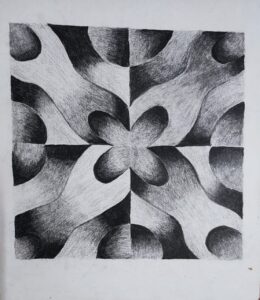Shading
Art Sketching Shading Drawing
Shading techniques, whether executed with EE pencils, charcoal pencils, or standard pencils, are fundamental in creating depth, dimension, and realism in drawings.
Understanding shading in drawing is crucial for adding depth, volume, and realism to artworks. Here’s why to learn, how to learn, what’s required, and what to gain.
Why Learn: Enhances realism, adds dimension, and creates mood and atmosphere.
How to Learn: Start with basic techniques, study light and shadow, practice observation, experiment with different tools and mediums.
What’s Required to Learn: Patience, practice, understanding of light and form, willingness to learn from mistakes.
What to Get After Learning: Improved drawing skills, ability to create lifelike representations, enhanced visual communication, and a deeper appreciation for light and shadow in art.
ART GALLERY










Art Sketching Shading Drawing
Graphite Pencil Shading:
Significance: Offers precise control and versatility, ideal for detailed renderings and subtle tonal transitions.
How to Learn: a. Start with understanding different pencil grades and their tonal values. b. Practice basic shading techniques such as hatching, cross-hatching, and stippling. c. Study light and shadow, focusing on light source direction and shadow placement. d. Experiment with blending tools like tortillons or blending stumps for smooth gradients.
Charcoal Pencil Shading:
Significance: Provides rich, deep tones and expressive marks, lending drama and spontaneity to drawings.
How to Learn: a. Begin with exploring different charcoal grades and their characteristics. b. Practice varying pressure and stroke techniques to control intensity and texture. c. Experiment with erasers and kneaded erasers for highlights and texture creation. d. Study the expressive potential of charcoal through tonal contrasts and gestural marks.
EE Pencil Shading:
Significance: Universally accessible and versatile, suitable for both sketching and detailed rendering.
How to Learn: a. Start with mastering basic pencil handling and control. b. Practice creating different tones by adjusting pressure and layering strokes. c. Experiment with varied pencil grades and their effects on shading. d. Study the interplay of light and shadow to create convincing three-dimensional forms.
Learning shading techniques enhances one’s ability to render form, texture, and atmosphere, enriching both artistic practice and visual communication skills. Regular practice, observation, and experimentation are essential for mastery.
